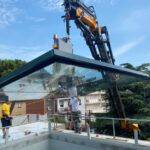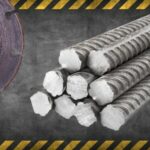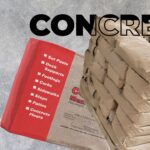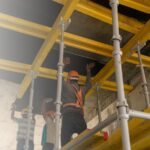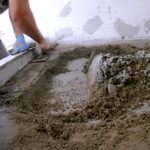Reinforced steel concrete is an omnipresent material in the world of construction, known for its strength and durability. From skyscrapers to bridges, reinforced concrete forms the backbone of our built environment.
However, there are times when this formidable material needs to be cut, modified, or demolished. I’ve always wondered how it is done. Whether it’s for renovation, repair, or removal, cutting through reinforced concrete is a challenging task that requires specialized techniques and equipment.
The steel reinforcement bars (rebars) embedded within the concrete add an extra layer of complexity to the process.
What Do You Need to Know About It?
This is a versatile and robust material, but cutting through it is no easy task. The combination of concrete’s hardness and the steel’s tensile strength makes it resistant to many conventional cutting methods. This necessitates the use of specialized techniques and equipment, which we will explore in the following sections.
Core Drilling: The Basics
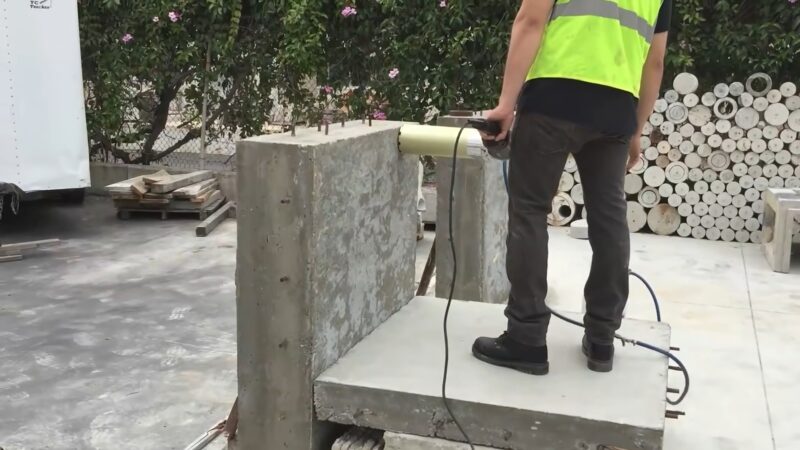
Core drilling is a technique that’s often used to cut through reinforced concrete. It involves using a drill with a diamond-tipped core bit to cut a circular hole in the concrete. The core bit is designed to cut through both the concrete and the steel reinforcement, making it ideal for reinforced concrete.
Core drilling is a versatile technique that can be used for a wide range of applications. Whether you need to create a hole for a pipe or conduit, or you need to take a sample of the concrete for testing, core drilling can provide a precise and efficient solution.
One of the advantages of core drilling is its precision. The core drill can create holes of various diameters, allowing you to cut exactly the size you need. Furthermore, because the core drill cuts a circular hole, it leaves a clean edge that requires minimal finishing.
Diamond Wire Sawing
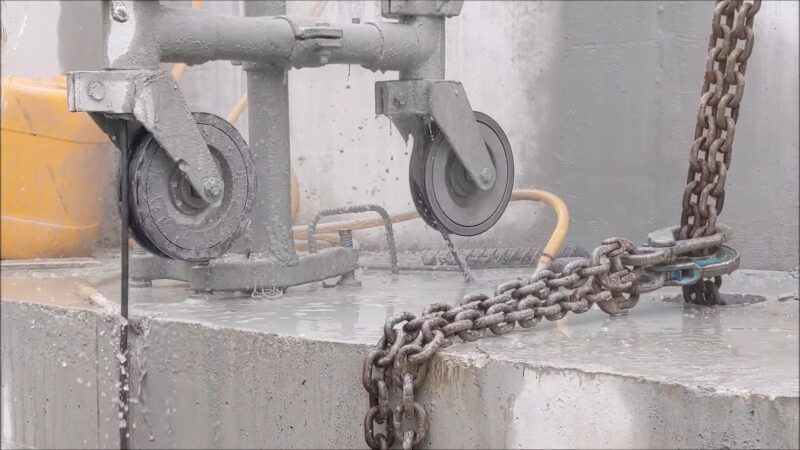
Diamond wire sawing is another powerful technique for cutting through reinforced concrete. It involves using a wire coated with diamond grit to cut through the concrete. The diamond grit is incredibly hard, allowing it to cut through both the concrete and the steel reinforcement.
This technique is particularly useful for large-scale cutting projects. The wire can be threaded through the concrete, allowing you to cut large sections with precision. This makes it ideal for projects such as bridge demolition, where large sections of reinforced concrete need to be cut and removed.
One of the advantages of diamond wire sawing is its efficiency. The diamond-coated wire cuts through the concrete quickly, reducing the time required for the cutting process. Furthermore, because the wire is flexible, it can be used to cut complex shapes and angles, providing a versatile solution for a wide range of cutting projects.
Hydraulic Bursting
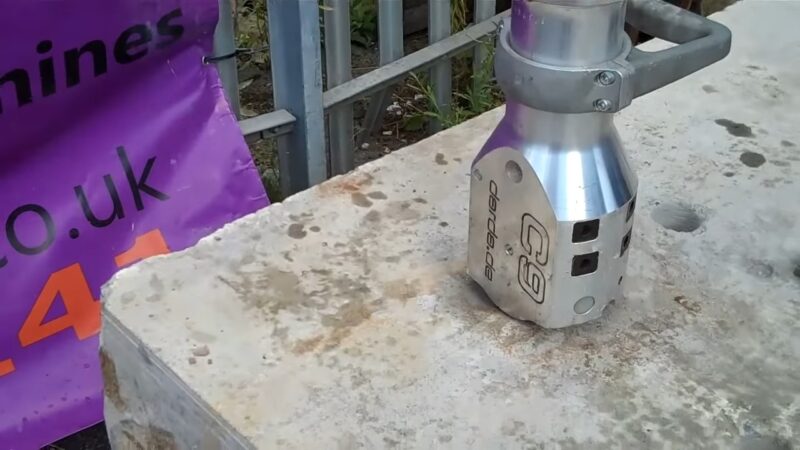
Hydraulic bursting is a technique used for the controlled demolition of reinforced concrete. It involves using hydraulic pressure to create cracks in the concrete, breaking it apart. The hydraulic pressure is applied through a series of holes drilled into the concrete, allowing for precise control over the demolition process.
It is particularly useful for projects where noise, dust, and vibration need to be minimized. Because it uses hydraulic pressure rather than impact or cutting, it creates less noise and dust than other demolition methods. This makes it ideal for projects in populated areas or sensitive environments.
Control is one of its main advantages. The hydraulic pressure can be carefully controlled to break the concrete apart in a controlled manner, reducing the risk of collateral damage. Furthermore, because it doesn’t require heavy machinery, it can be used in areas with limited access or space.
Robotic Demolition
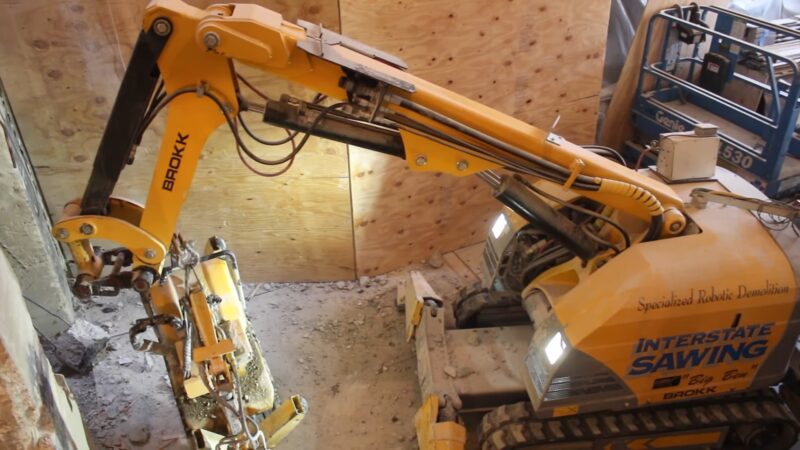
Robotic demolition tools offer a modern solution for cutting through reinforced concrete. These remote-controlled machines are equipped with powerful cutting tools, allowing them to cut through both the concrete and the steel reinforcement.
This makes them ideal for projects where access is limited or where safety is a concern. Robotic demolition tools offer several advantages over traditional cutting methods. Because they are remote-controlled, they can be operated from a safe distance, reducing the risk to the operator.
Furthermore, they can be equipped with various tools, allowing them to cut, crush, or drill through the concrete as needed. These are known for their versatility. They can be used in a wide range of environments, from confined spaces to hazardous areas. This makes them a valuable tool for many cutting and demolition projects.
Water Jet Cutting
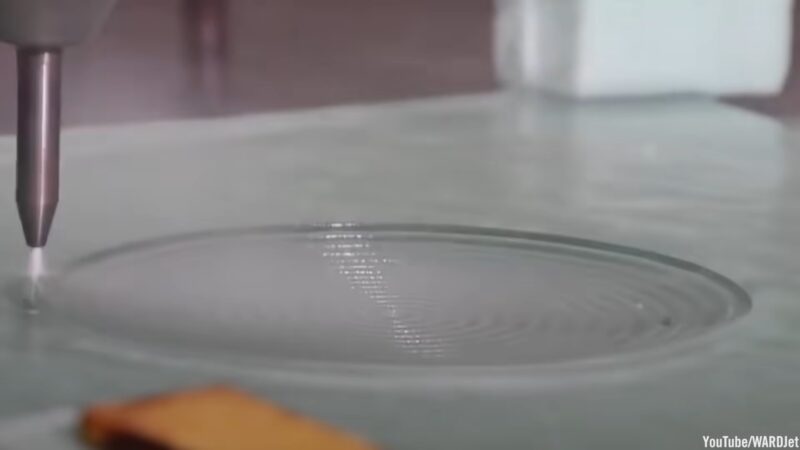
Water jet cutting is a non-thermal method for cutting through reinforced concrete. It involves using a high-pressure stream of water to erode the concrete. The water jet can cut through both the concrete and the steel reinforcement, making it a versatile cutting method.
One of the key advantages of water jet cutting is its eco-friendly nature. Because it uses water rather than heat or mechanical force, it produces less dust and noise than other cutting methods. This makes it a good option for projects where environmental considerations are a priority.
Despite its advantages, water jet cutting does have some limitations. It requires a significant amount of water, which can be a challenge in areas where water is scarce. Furthermore, it can be slower than other cutting methods, particularly for thick sections of reinforced concrete.
Thermic Lance Cutting
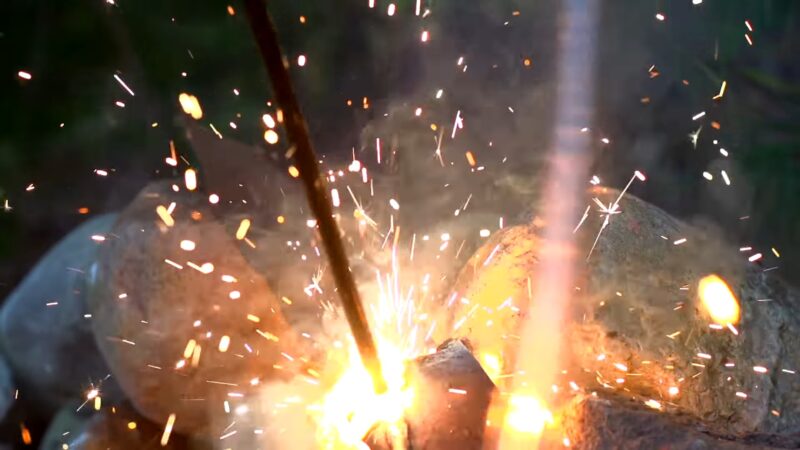
Thermic lance cutting is a technique that uses extreme heat to cut through reinforced concrete. A thermic lance is a tool that burns a mixture of oxygen and fuel gas, producing a flame that can reach temperatures of over 3,000 degrees Celsius.
This extreme heat can melt through both the concrete and the steel reinforcement. Thermic lance cutting is a powerful technique, but it requires careful handling. Extreme heat can pose a risk of burns or fires, so appropriate safety measures must be taken.
Furthermore, the intense heat can produce fumes and smoke, so adequate ventilation is necessary. Despite these challenges, thermic lance cutting can be an effective solution for cutting through reinforced concrete. It’s particularly useful for projects where other cutting methods are ineffective or impractical.
Assessing Safety and Environmental Factors
Safety is a paramount concern when cutting through reinforced concrete. The process can produce dust, noise, and vibration, all of which can pose health and safety risks. Therefore, appropriate safety measures must be taken, including the use of personal protective equipment and the implementation of dust and noise control measures.
Environmental considerations are also important. Some cutting methods, such as water jet cutting, are more eco-friendly than others. However, all methods produce some degree of waste, which must be properly managed to minimize environmental impact.
Choosing the right cutting method requires balancing these safety and environmental considerations with the project’s requirements. Factors such as the size and location of the cut, the thickness of the concrete, and the presence of steel reinforcement all need to be considered.
While the presence of reinforcement can often allow for earlier formwork removal, it’s crucial to understand the intricacies of concrete formwork removal timing to ensure the structural integrity of the concrete during the cutting process.
Cost and Time Efficiency in Cutting Techniques

Different techniques come with varying levels of cost and time implications, and understanding these can significantly impact the overall success of a project. For instance, diamond wire sawing is a method known for its speed and efficiency.
This technique uses a wire embedded with diamond segments, which can cut through both concrete and steel reinforcement with relative ease. The speed of this method can significantly reduce the time spent on the cutting process, potentially accelerating the overall project timeline.
However, the high cost of diamond wire sawing equipment and the need for skilled operators can make this method more expensive than others. On the other hand, methods like hydraulic bursting and thermic lance cutting can be more cost-effective options.
Hydraulic bursting, which uses hydraulic pressure to create cracks in the concrete, and thermic lance cutting, which employs extreme heat to melt through the material, are often less expensive in terms of equipment and operational costs.
However, these methods may take longer to execute, potentially extending the project timeline. Balancing cost and time efficiency with the project’s requirements can indeed be a challenging task. Several factors need to be taken into account.
Size and complexity of the cut
For instance, this factor can influence the choice of cutting method. Larger, more complex cuts may necessitate the use of faster, albeit more expensive, cutting techniques to stay within the project’s timeline.
Project’s timeline
Projects with tight deadlines may benefit from faster, more efficient methods, even if they are more costly. Conversely, projects with more flexible timelines may be able to utilize slower, more cost-effective methods.
Available budget
While faster methods may save time, their higher costs may not be feasible for projects with limited budgets. In such cases, slower but more affordable methods may be the more practical choice. In some scenarios, a combination of methods may offer the most efficient and cost-effective solution.
For example, a project might use diamond wire sawing for larger, more complex cuts, and hydraulic bursting or thermic lance cutting for smaller, simpler cuts. This approach allows for the benefits of different methods to be utilized where they are most effective, potentially optimizing both cost and time efficiency.
Common Applications
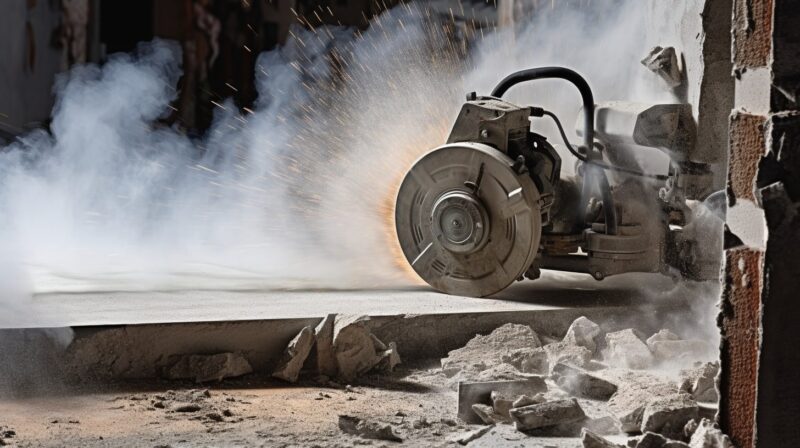
Reinforced concrete is used in a wide range of construction projects due to its strength, durability, and versatility. It’s commonly used in the construction of buildings, bridges, highways, dams, and other structures that need to withstand significant loads and forces.
In buildings, reinforced concrete is often used in the construction of foundations, walls, floors, and columns. It provides the necessary strength and stability to support the weight of the building and resist forces such as wind and earthquakes.
In bridges and highways, reinforced concrete is used to create structures that can withstand the weight of vehicles and the forces exerted by traffic. The use of reinforced concrete is not limited to large-scale structures. It’s also used in smaller projects, such as residential construction and landscaping.
From retaining walls to driveways, reinforced concrete provides a durable and long-lasting solution that can withstand the elements and the test of time.
The Need for Cutting Through Reinforced Concrete
There are many reasons why you might need to cut through reinforced concrete. Perhaps you’re renovating a building and need to create a new door or window opening. Or maybe you’re repairing a bridge and need to remove a damaged section of concrete.
In some cases, you might need to demolish an entire structure made of reinforced concrete. Cutting through reinforced concrete is a challenging task. Conventional cutting methods, such as using a circular saw or angle grinder, are often ineffective against the hardness of the concrete and the tensile strength of the steel reinforcement.
Furthermore, these methods can create a lot of dust and noise, posing health and safety risks. To effectively cut through reinforced concrete, you need to use specialized techniques and equipment. These methods are designed to overcome the challenges posed by reinforced concrete, allowing you to cut through the material with precision and efficiency.
FAQs:

1. Are there any alternative cutting methods not mentioned earlier?
Some less common methods include explosive cutting and chemical cutting, though they may have specific limitations and risks.
2. Can DIY methods be used?
Cutting through reinforced concrete requires specialized equipment and expertise, making it unsuitable for DIY projects.
3. What precautions should be taken to avoid accidents during cutting operations?
Clearing the work area, using appropriate safety gear, and following safety guidelines are crucial precautions.
4. Can cutting lead to airborne dust particles?

Certain cutting methods may generate dust, and dust control measures should be implemented to protect workers’ respiratory health.
5. Are there any specific post-cutting measures required after cutting?
Depending on the project, post-cutting measures may involve debris removal, surface finishing, or structural reinforcements.
Conclusion
Cutting through reinforced steel concrete is a complex task that requires specialized techniques and equipment. From core drilling and diamond wire sawing to hydraulic bursting and robotic demolition, there are many methods available, each with its own advantages and challenges.
Choosing the right cutting method requires a thorough understanding of the project’s requirements, as well as considerations of safety, environmental impact, cost, and time efficiency. With the right approach and the right tools, it’s possible to cut through reinforced steel concrete with precision and efficiency.
The importance of skilled professionals and advanced equipment in this process cannot be overstated.


